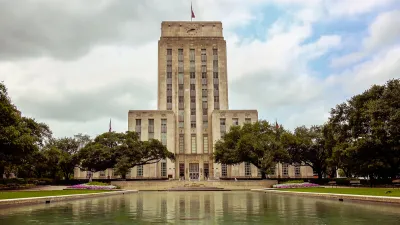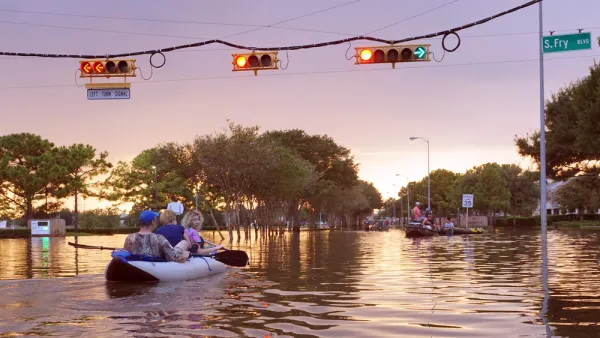Following Hurricane Harvey, Houston's City Hall became flooded with four feet of water, rendering the building's electrical and mechanical equipment useless. Restoring power back to City Hall quickly was crucial in aiding the recovery efforts.

On August 25, Hurricane Harvey slammed into the coast of Texas between the small communities of Port Aransas and Port O’Connor. The Category 4 hurricane was soon downgraded to a tropical storm, but it lingered off the Gulf Coast, breaking regional rainfall records. It soon became apparent that flooding was going to become a serious threat to southeast Texas, and in particular to the city of Houston, the fourth largest city in the United States.
In the early hours of Monday morning, August 28, rainwater runoff from areas to the west of Houston began to engorge Buffalo Bayou, raising the water to record levels. As the bayou continued to rise, it burst its banks and eventually overflowed the flood wall around the City Hall Annex, flooding two levels of parking and reaching the underside of the ground floor structure of the building. From the upper parking level, the water entered the tunnel that connects the annex to the basement of City Hall, flooding the mechanical and electrical equipment rooms to 4 feet.
On the afternoon of August 30, engineers Tom Smith, Hussein Moussa, and Steve Done from Arup’s Houston office responded to a request for help from officials at the City of Houston. Based on mayoral direction, their first goal in the aftermath of the storm was to get the departments based at City Hall and the City Hall Annex up and running again, so that they could start to undertake the essential work of helping Houston to rebuild. Smith and Moussa are embedded with staff from the City’s General Services Department and the contracting team to repair and replace the damaged equipment.
FULL STORY: Up and running: The speedy recovery of Houston’s City Hall

National Parks Layoffs Will Cause Communities to Lose Billions
Thousands of essential park workers were laid off this week, just before the busy spring break season.

Retro-silient?: America’s First “Eco-burb,” The Woodlands Turns 50
A master-planned community north of Houston offers lessons on green infrastructure and resilient design, but falls short of its founder’s lofty affordability and walkability goals.

Delivering for America Plan Will Downgrade Mail Service in at Least 49.5 Percent of Zip Codes
Republican and Democrat lawmakers criticize the plan for its disproportionate negative impact on rural communities.

Test News Post 1
This is a summary

Test News Headline 46
Test for the image on the front page.

Balancing Bombs and Butterflies: How the National Guard Protects a Rare Species
The National Guard at Fort Indiantown Gap uses GIS technology and land management strategies to balance military training with conservation efforts, ensuring the survival of the rare eastern regal fritillary butterfly.
Urban Design for Planners 1: Software Tools
This six-course series explores essential urban design concepts using open source software and equips planners with the tools they need to participate fully in the urban design process.
Planning for Universal Design
Learn the tools for implementing Universal Design in planning regulations.
EMC Planning Group, Inc.
Planetizen
Planetizen
Mpact (formerly Rail~Volution)
Great Falls Development Authority, Inc.
HUDs Office of Policy Development and Research
NYU Wagner Graduate School of Public Service





























